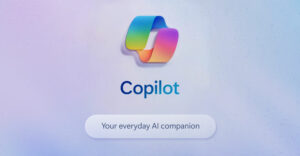
Last week was a short week, and while you know the outcome of Black Friday, that is still in my future. We did have two big announcements, though.
Amazon made a run at the eBook market with what is the best eBook in the world; in addition, the Dell XPS One, which follows the Gateway One to market, is an impressive piece of work and probably makes Apple wish it had updated the iMac more aggressively.
Microsoft introduced its first real phone system for small businesses; I have a lot of history with the Microsoft phones over the years, and this is the first time I’ve been impressed in a good way.
Finally, we’ll close with my product of the week, which is AMD’s Spider platform, a credible, though as of the time I’m writing this, largely untested offering.
Amazon’s Kindle
The market for eBooks is actually worse than it was for MP3 players when Apple entered it, and Amazon is clearly looking to create an iPod-like offering. The trick is to create a great user experience coupled with strong content access, and that is where Amazon clearly focused.
In addition, you need compelling hardware. Currently, the Sony Reader has the best hardware but demonstrates why the market hasn’t taken off because the user experience and the content with the Sony isn’t where it needs to be. Amazon is the biggest online store in the world and one of — if not the — most powerful sellers of books. This potentially gives Amazon the leverage it needs to get the content deals done.
Kindle uses ePaper which, like the Sony, gives the screen a paper-like look with high contrast and the same kind of viewing capability as paper. This means it won’t wash out outside, however it also means you can’t read the thing at night without another light source. For an electronic product, that’s something that should have been easy to avoid.
While it has extensive navigation capability via an attached keyboard, the keyboard adds to the size of the product and detracts from its appearance. It has little value for reading a book, but it does make it easier to enter information into the reader.
This takes us to the strongest advantage in this eBook reader, the one thing that differentiates it from all other products in its class; it comes with wireless connectivity. This isn’t WiFi, which is kind of a pain to use with something like this, but cellular, which means you can connect anyplace Sprint reaches to download new books, magazines, newspapers and possibly — eventually — music (the product also includes an MP3 player and an expansion SD slot under the battery).
Currently, the book list seems kind of limited to me, but initially, the iTunes library was somewhat limited as well, so as long as the available books are those people want to read that may not yet be a big problem for early adapters. Then again, you could rip music and can’t really rip a book. Well, you can rip a book, but the result isn’t an eBook — it’s scrap paper.
The big problem is the product is kind of butt-ugly, and Amazon would have done much better had it used a slide-out keyboard and metals or black plastic rather than the white it ended up using.
I’m reminded of the “Chorus Line” song, “Dance 10 Looks 3,” referring to the dancer who couldn’t get a job because she wasn’t attractive enough. While the first iPods were white, they’ve moved to colors and metal and so should the Kindle. You’d figure Amazon, of all companies, would understand that products in this class need to be attractive. So the Sony has the looks and the Kindle has the brains, and this means most of us will wait for the product that has both.
Still, for those who already have more iPods than they’ll ever need, this eventually could become the next big thing as folks use it to increasingly access the network and download books and entertainment. Future versions of this thing could be really cool, which results in my standing recommendation with generation one products: “Let someone else be the first.”
I’d suggest waiting until next year to pick one up; by then I’ll bet it gets a facelift and looks much better.
The Microsoft PBX
When I first started covering Microsoft, they had a joke phone floating around in Europe. It had been created by someone in their European division because folks were constantly talking about Microsoft entering the phone business.
A few years later, Microsoft created an advanced wireless phone connected back to a Windows 95 PC, which probably still holds the record for being the worst phone system ever created. Windows 95 wasn’t particularly robust and the phone didn’t work if the PC wasn’t. I’m sure Microsoft regretted bringing the thing to market over a lot of objections — and it failed miserably.
That was then, this is now, and Response Point, a private branch exchange (PBX) phone system for small offices, is actually very impressive. Basically a communications server running an embedded operating system, this product can be programmed to things most high-end PBXs installed in large companies still can’t do — like take voice commands and follow-me calling. It’s impressively easy to set up and, depending on the company providing the hardware, either is wireless or uses the existing Ethernet that is likely already running to the desks.
What makes this interesting is that this, along with the new Zune and the Microsoft Home Server, are demonstrating a capability in Microsoft — simple, easy-to-use products — which have long been needed by that company and its customers. That’s got to be a good thing.
Dell XPS One: And One to Rule them All
Speaking of simple and using a poor excuse for a line out of Lord of the Rings, I’m very impressed with the new Dell XPS One, probably the best-looking desktop computer that has ever come out of that company. The background behind this is that some months back, Dell increased dramatically its design staff, and they were given the directive to build stuff that made the aging Apple products look ugly by comparison.
The first offering was the Dell XPS M1330 and the most recent is the new Dell XPS One, which is arguably a better all-in-one than the iMac. Granted, on the software side, Dell is using Vista and Adobe Elements. Leopard coupled with iLife and other Apple preloads is still a nicer software bundle if you don’t mind the compatibility issues (why can’t someone else do a true iLife offering?). I’m looking at this from a hardware perspective, though, given that most people who could use Macs are probably using them right now and the rest of us are still on Windows.
What makes this a better all-in-one is it comes stock with wireless everything, so you really only need to plug in the power cord. Unlike the iMac, you also get a built-in TV tuner (with HD) and can get a built in Blu-Ray drive, though I’d sure wait until the price dropped for one of these myself. All-in-one means you don’t have a bunch of stuff cluttering up the desk and these systems lend themselves to TV use.
The product looks really nice in person with a real glass base, custom keyboard and mouse, and unlike the Apple, the cables are routed so you can’t see them from the front. I would like to see them better shrouded in the rear on both products, though.
All in all — while I truly doubt any Mac users would be tempted — first HP, then Gateway, and now Dell is giving Apple a run for this market, and every cycle they get vastly better. Given that the iMac hasn’t really changed that much in the last several years, it kind of makes you wonder when Apple will be looking at their rear bumpers. It may be time for Steve Jobs to get the whip out and get those doggies rolling, Rawhide! (OK, enough eggnog for me).
Product of the Week: AMD’s Spider Platform
OK, this is kind of cheating in that this really isn’t a product but a platform. Some time back and in anticipation of Intel’s getting its house in order, AMD bought ATI and promised a revolution. Spider is the first indication that the revolution is at least possible.
Combining the Phenom processor, a tuned chipset and strong graphics, the end result is a platform that could allow AMD to continue to compete strongly against Intel’s offerings, even though Intel is kicking serious butt right now. Penryn, Intel’s latest, is incredibly impressive and has kept Moore’s Law on the books.
Spider is the first truly interesting platform since Centrino (which focused on wireless) in that it promises a tuned blend of processor and graphics performance at an affordable price.
We are still waiting on production systems to benchmark and test, but the fact that Spider exists at all indicates the merger is starting to work for AMD and that the market will continue to have the competition that keeps the new products evolving. Since I love evolution, as opposed to stagnation, that is a good thing.
Welcome back from Thanksgiving, and speaking for your boss, get back to work!
Rob Enderle is a TechNewsWorld columnist and the principal analyst for the Enderle Group, a consultancy that focuses on personal technology products and trends.




















































